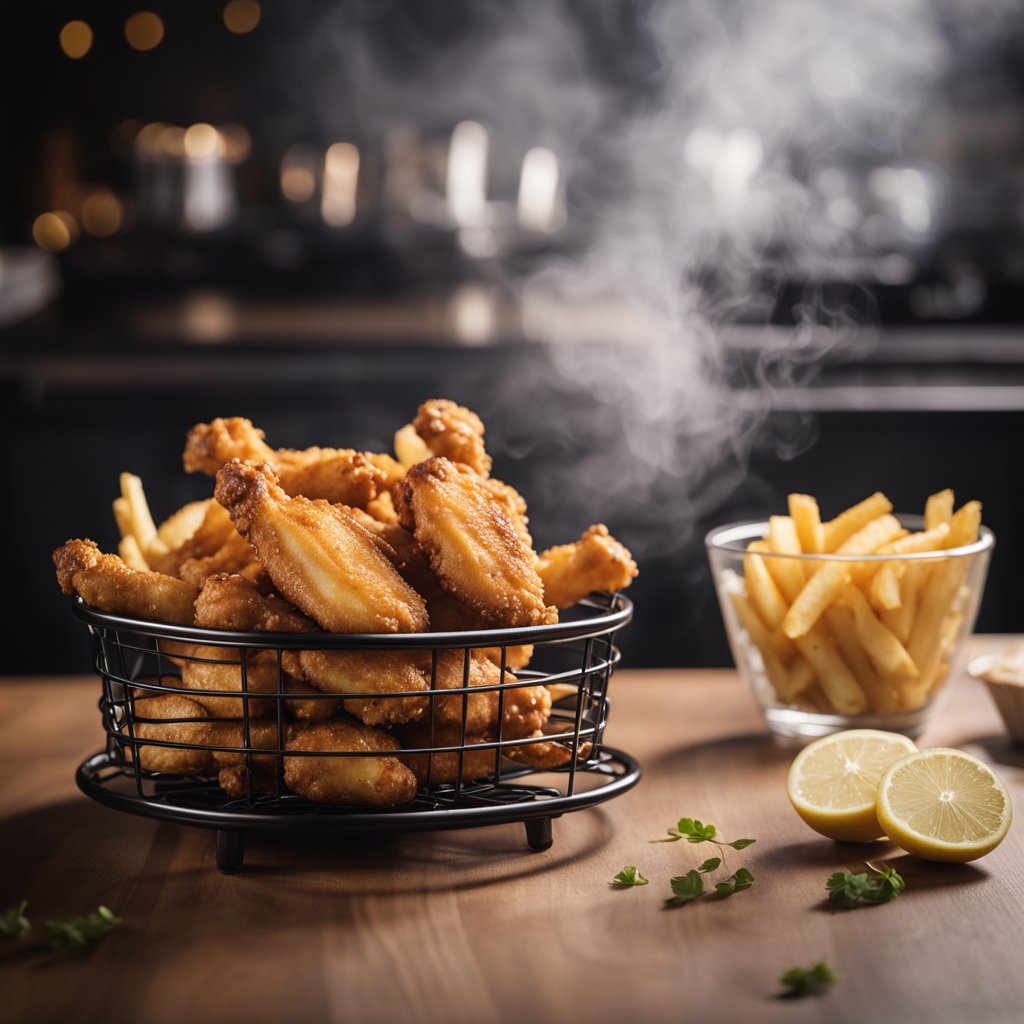Ensuring safety in the kitchen extends beyond cooking practices. This article on how to dispose of kitchen knives delves into the importance of safe knife disposal and outlines responsible methods to prevent harm and environmental damage. Learn how to effectively handle old or damaged knives, from securing the blade to exploring sustainable options for disposal.
Contents
- 1 Key Takeaways
- 2 Understanding the Importance of Safe Knife Disposal
- 3 Preparing Knives for Disposal
- 4 Disposal Options for Kitchen Knives
- 5 Safety Measures During Disposal
- 6 Beyond Disposal: Sustainable Practices with Old Knives
- 7 Conclusion
- 8 Frequently Asked Questions
- 8.1 What is the safest way to dispose of old kitchen knives?
- 8.2 Can I throw kitchen knives in the regular trash?
- 8.3 How can I repurpose old kitchen knives instead of throwing them away?
- 8.4 Is it possible to recycle kitchen knives, and if so, how?
- 8.5 What should I do with kitchen knives that are no longer usable?
- 8.6 Are there any community programs that accept old kitchen knives?
Key Takeaways
- Wrapping and securing kitchen knives in thick materials and labeling them as ‘sharp’ ensures safe handling and prevents accidental injuries.
- Donating or repurposing knives serves the dual purpose of decluttering your space while supporting community programs or individuals in need.
- Recycling knives is an environmentally responsible choice, but it’s important to follow local regulations and recycling center guidelines.
- Personal protective equipment and safe handling techniques are essential to avoid cuts or punctures during the disposal process.
- Educating others on proper disposal practices promotes a culture of safety and sustainability, extending the impact beyond individual actions.
Understanding the Importance of Safe Knife Disposal

The Risks of Improper Disposal
Improper disposal of kitchen knives can lead to serious injuries and environmental hazards. When knives are carelessly thrown into household trash, they can cause cuts or punctures to those handling the waste. This not only poses a threat to sanitation workers but also to anyone who may come into contact with the garbage, including children and pets.
Environmental concerns are also significant. Knives that end up in landfills can harm wildlife and contribute to metal waste. It’s essential to recognize these risks and seek safer disposal methods to mitigate potential harm.
Safe disposal practices are not just a personal responsibility; they are a collective necessity to ensure community safety and environmental protection.
- Injury to waste handlers: Risk of cuts and punctures
- Environmental impact: Potential harm to wildlife and contribution to metal waste
- Legal implications: Possible violation of waste disposal regulations
Environmental Considerations
When disposing of kitchen knives, it’s essential to consider the environmental impact. Metal waste can be significant, and improper disposal methods may harm both human safety and the environment. Some materials, when discarded carelessly, can release harmful chemicals into the soil and air, or even cause landfill fires.
Recycling is a responsible alternative that reduces the amount of trash sent to landfills and supports a cyclic ecosystem. Ensuring that knives are disposed of in a way that does not contribute to pollution is a key aspect of environmental stewardship. Here are some steps to consider:
- Clean and decontaminate the knife to remove any organic matter.
- Secure the blade to prevent injury to sanitation workers.
- Label the package clearly to indicate that it contains sharp objects.
By adopting safer disposal methods, we not only protect the environment but also contribute to a sustainable future. It is crucial to understand the risks associated with awkward disposal and adopt these safer alternatives.
Legal and Ethical Responsibilities
When disposing of kitchen knives, it is crucial to consider not only the safety aspects but also the legal and ethical responsibilities involved. Proper disposal is a matter of public safety, ensuring that these potentially dangerous items do not cause harm after they leave your possession.
- Ensure compliance with local regulations regarding sharp objects.
- Consider the privacy and safety of others during disposal.
- Maintain transparency and accountability in disposal methods.
It is our duty to dispose of knives in a manner that respects the environment and community safety.
Remember, improper disposal can lead to legal repercussions and ethical dilemmas. It is essential to stay informed and act responsibly.
Preparing Knives for Disposal

Cleaning and Decontamination
Before disposal, thorough cleaning and decontamination of kitchen knives is crucial. This step ensures the removal of any food particles, bacteria, and potential hazards. Begin by wearing gloves and carefully hand-washing the knife with warm, soapy water.
Dry the knife completely to prevent rusting. If the knife is to be donated or repurposed, consider using a disinfectant to wipe down the blade and handle for extra safety.
Proper decontamination minimizes health risks and prepares the knife for safe handling during the disposal process.
For knives that are heavily soiled or have been used for meat, poultry, or fish, additional steps may be necessary:
- Soak the knife in a mixture of hot water and dish soap.
- Use a brush to scrub any stubborn residue.
- Rinse under running water.
- Sanitize with a solution of water and bleach (1 tablespoon of bleach per gallon of water).
- Allow the knife to air dry or pat dry with a disposable towel.
Securing the Blade
Before disposing of kitchen knives, it is crucial to secure the blade properly to prevent injuries. Start by wrapping the blade in a thick material, such as newspaper or a towel. Secure the wrapping with tape to ensure the blade stays covered.
Packaging the knife securely is the next step. Place the wrapped knife into a sturdy cardboard box or a similar container. This extra layer of protection is vital for the safety of waste management workers and anyone else who might handle your trash.
Ensure that the knife is immobilized within the container to prevent any movement that could lead to unwrapping.
Finally, clearly label the package as containing sharp objects. This communicates the potential hazard and allows for appropriate handling. Follow these steps to minimize the risk of accidents and injuries:
Packaging and Labeling for Safety
Once your kitchen knives are clean and the blade is secured, proper packaging is crucial to ensure safety. Wrap the blade in thick paper or cardboard to prevent any accidents. Secure the wrapping with tape to avoid unwrapping during handling.
For labeling, clearly mark the package as sharp objects. This is not only for your safety but also for anyone who might handle the waste. Use a permanent marker to write on the package, and consider including a warning symbol if possible.
- Place the wrapped knife in a box or rigid container.
- Seal the container with strong tape.
- Label the container with the word ‘SHARP’ and a warning symbol.
Remember, proper labeling helps prevent injuries and is a key step in the disposal process.
Before disposing of your knives, check local regulations. Some areas have specific guidelines for disposing of sharp objects to minimize the risk of injury.
Disposal Options for Kitchen Knives

Donation and Repurposing
Donating your old kitchen knives is a meaningful way to ensure they continue to serve a purpose. Many charitable organizations welcome kitchen items, including knives, to assist those in need. This act of giving not only diverts the knives from landfills but also contributes positively to the community.
Before donating, ensure knives are clean and safe to handle. Wrap the blades with paper and secure them with tape for safety. Some donation centers may offer pick-up services for a small fee, making the process convenient.
By repurposing old knives, you can support various community programs, such as cooking classes or shelters. It’s a sustainable choice that extends the life of your kitchenware.
Remember, when donating, it’s crucial to verify that the organization accepts such items and that the knives are in a condition suitable for further use.
Recycling Possibilities
Recycling kitchen knives is a responsible way to minimize waste and contribute to a sustainable environment. Check with local recycling centers to see if they accept kitchen knives, as policies vary by location. Some centers may require knives to be disassembled before recycling.
Metals from kitchen knives can often be recycled and repurposed. Retailers or specialized companies may offer recycling services for these items. It’s important to inquire about the specific requirements for recycling knives at these facilities.
- Ensure knives are clean and free of contaminants.
- Disassemble knives if necessary, separating metal from other materials.
- Wrap blades securely to prevent injury to recycling center staff.
When recycling knives, always prioritize safety and environmental responsibility. Proper preparation and adherence to guidelines ensure a smooth recycling process.
Trash Disposal: Do’s and Don’ts
When disposing of kitchen knives in the trash, safety should be your top priority. Knives can pose serious risks if not handled and discarded properly. Here are some guidelines to follow:
- Wrap the blade securely in cardboard and tape it to prevent injuries.
- Label the package clearly with a warning about the contents.
- Never hide knives in other trash where they can cause harm.
Remember, knives should be the last resort for trash disposal. Explore all other options like donation or recycling first.
Disposal in domestic waste requires caution. Avoid placing knives in bags that can tear or in bins without a secure lid. If you must dispose of a knife, ensure it is inaccessible to children and animals, and that sanitation workers are not at risk.
Safety Measures During Disposal

Personal Protective Equipment
When disposing of kitchen knives, personal safety should be your top priority. Wearing the appropriate personal protective equipment (PPE) can significantly reduce the risk of injury. Ensure you have the following items:
- Heavy-duty gloves to protect your hands from cuts
- Safety goggles to shield your eyes from any potential sharp fragments
- Sturdy shoes to prevent injuries in case a knife falls on your foot
Always check the condition of your PPE before use; worn-out equipment may not offer adequate protection.
Remember, investing in quality PPE is investing in your safety. It’s a small price to pay for peace of mind during the disposal process.
Safe Handling Techniques
Always prioritize safety when handling knives for disposal. Use thick gloves to protect your hands and ensure a firm grip.
Transport knives carefully, avoiding any sudden movements that could cause the blade to shift. Place the knife on a stable surface before wrapping it securely.
- Clean the knife thoroughly.
- Wrap the blade in several layers of newspaper or cardboard.
- Secure the wrapped knife with tape.
- Place the knife in a rigid container for disposal.
When disposing of knives, it’s essential to minimize risk at every step. Proper wrapping and containment are key to preventing accidents.
Transportation and Drop-off Procedures
Once your kitchen knives are properly packaged, transporting them safely to the disposal or donation site is crucial. Ensure that the package is secured in your vehicle to prevent any movement that could cause injury or damage. Use restraint devices like seat belts or cargo nets to keep the package in place.
When choosing a drop-off location, consider the proximity to your home and the facility’s operating hours to avoid unnecessary trips or delays.
For donation centers that offer pick-up services, schedule a pick-up time that aligns with your availability. Ensure that all delivery notes are filled out accurately to facilitate a smooth handover. If you’re heading to a recycling facility, check their policies beforehand to confirm that they accept kitchen knives.
Remember, the goal is to minimize risks and ensure that your old knives find a new purpose or are disposed of responsibly.
Beyond Disposal: Sustainable Practices with Old Knives

Creative Upcycling Ideas
Transforming old kitchen knives into new treasures not only showcases your creativity but also contributes to a sustainable lifestyle. Consider these upcycling ideas to give your old knives a second life:
- DIY Repurposed Silverware Chandelier: Hang your old knives, forks, and spoons in an artistic display of light and shadow.
- Vintage Spoon Garden Markers: Use the handles of your knives to mark your garden plants with a touch of vintage charm.
- Farmhouse Style Rolling Pin Rack: Convert a rolling pin and some old knives into a stylish rack for your kitchen.
By reusing aged knife blades, you not only reduce environmental impact but also save money on purchasing new tools.
Remember, upcycling is not just about being resourceful; it’s about adding value and uniqueness to your home. With a little effort, those forgotten knives can become conversation pieces that reflect your personal style.
Supporting Community Programs
Engaging with community programs can transform the disposal of old kitchen knives into a societal contribution. Local initiatives often welcome donations to support various activities, from culinary training workshops to resource centers for the underprivileged. Here are some ways to get involved:
- Research local organizations that accept kitchenware donations.
- Contact culinary schools or community centers to inquire about their needs.
- Participate in community swap events where you can exchange old knives for other useful items.
By supporting community programs, not only do you ensure safe disposal, but you also contribute to the betterment of your community.
Remember, before donating, ensure that the knives are clean, safe to handle, and appropriately packaged. This small effort on your part can make a significant difference in someone else’s life.
Educating Others on Disposal Best Practices
Sharing knowledge on the safe disposal of kitchen knives is essential for community safety and environmental preservation. Educating others can be as simple as hosting a workshop or creating informative flyers. It’s important to emphasize the lifecycle of a knife and the proper end-of-life procedures.
- Discuss the importance of safe disposal in domestic waste.
- Highlight the risks of awkward disposal and its consequences.
- Provide clear instructions on how to secure and package knives for disposal.
By fostering an informed community, we reduce the likelihood of accidents and promote responsible waste management.
Remember, the goal is not only to dispose of knives safely but also to minimize waste. Encourage the exploration of donation, recycling, and upcycling options before resorting to trash disposal.
Conclusion
In conclusion, the proper disposal of kitchen knives is a critical aspect of kitchen safety and environmental responsibility. Throughout this article, we have explored various methods to ensure that old or damaged knives are disposed of in a manner that prevents harm to individuals and minimizes environmental impact. From wrapping knives securely to considering donation or recycling options, each step contributes to a safer and more sustainable approach. Remember, taking the time to dispose of knives safely is not only a reflection of good kitchen practices but also an act of consideration for the well-being of others and the planet. Let’s commit to responsible disposal and maintain the highest standards of safety and environmental care in our kitchens.
Frequently Asked Questions
What is the safest way to dispose of old kitchen knives?
The safest way to dispose of old kitchen knives is to first wrap and secure them to prevent injury. Use a knife sheath, blade guard, or wrap the knife in multiple layers of paper or cardboard, securing it with tape. Then place it in a puncture-resistant container, label it as “sharp objects”, and follow local disposal regulations.
Can I throw kitchen knives in the regular trash?
You can dispose of kitchen knives in the regular trash, but only after taking safety precautions. Wrap the blades securely in thick layers of newspaper or cardboard, place them in a sturdy container, and clearly label it to indicate sharp objects inside. This ensures safety for waste management workers and others.
How can I repurpose old kitchen knives instead of throwing them away?
Old kitchen knives can be repurposed through creative upcycling or donation. Consider transforming them into gardening tools, art projects, or donating them to community centers, culinary schools, or thrift stores where they can be refurbished and used by others.
Is it possible to recycle kitchen knives, and if so, how?
Yes, kitchen knives can often be recycled as they are made of metals that can be reclaimed. Contact your local recycling center to find out if they accept metal kitchen utensils and follow their guidelines for recycling knives safely.
What should I do with kitchen knives that are no longer usable?
For knives that are no longer usable, ensure they are safely wrapped and secured, then dispose of them according to your local waste management’s guidelines. If recycling is not an option, make sure they are contained and labeled properly when placing them in the trash.
Are there any community programs that accept old kitchen knives?
Many community programs, such as shelters, thrift stores, culinary schools, and community centers, may accept old kitchen knives. These programs often refurbish and redistribute knives to those in need. Contact local programs to inquire about their donation policies.



